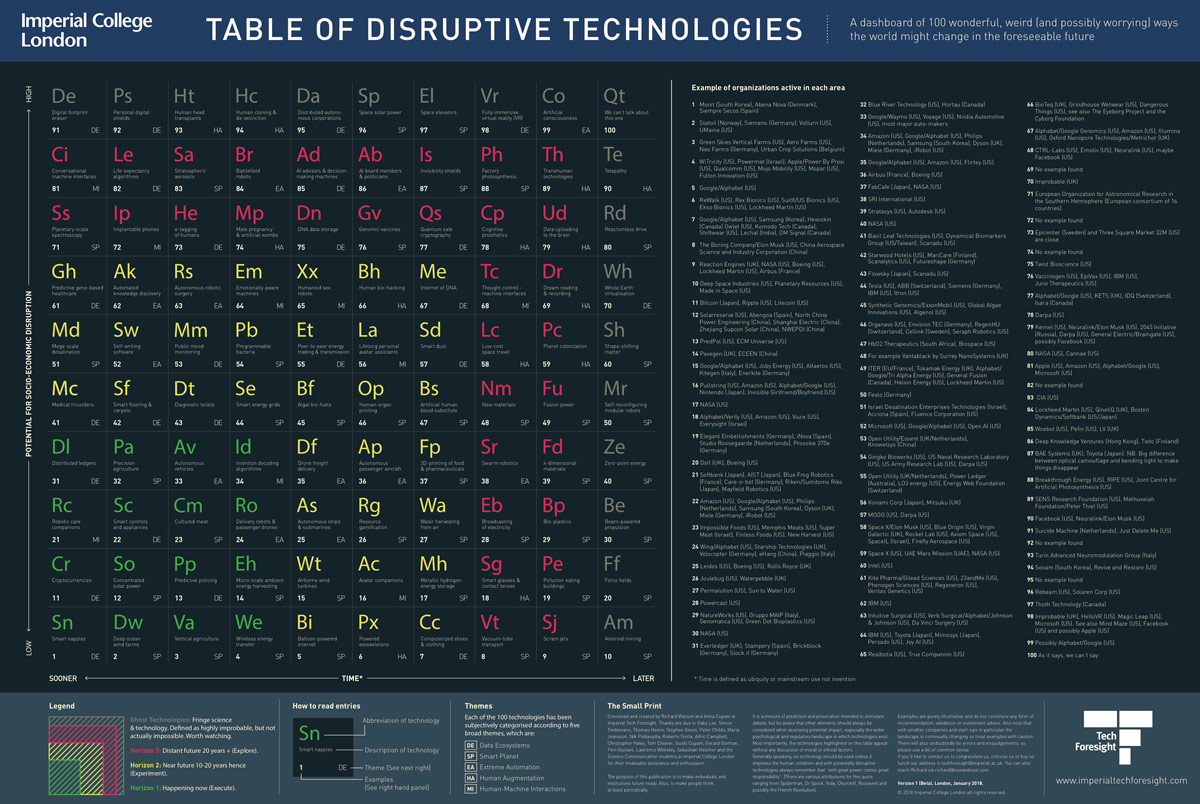Visions
Interrogate our table of disruptive technologiesFrom smart nappies to buildings that eat pollution, and AI assistants to 3D printing of pharmaceuticals, we looked at emerging technologies that can change our world in the coming 20 years and more.
Please fill in your details below to reveal the download

Please email us at [email protected] for an accessible version of this infographic.
What is this?
The table of disruptive technologies is designed to make people think. The table consists of 100 potentially disruptive technologies, which we have defined as those capable of significant social, economic or political upheaval.
How it works
The Y Axis ranks potential for disruption from high to low, while the X Axis is time ranked from sooner to later. Importantly this does not relate to the invention of a technology, but rather its common use or ubiquity.
The 100 technologies are further divided into four groups. Horizon one technologies (green on the table) are new technologies that are happening right now. Companies should be integrating and executing these technologies right now if they are relevant to their business.
Horizon two technologies (yellow) are probable near future technologies (10-20 years hence). Companies should be experimenting with and discussing these technologies now.
Horizon three technologies (red) are things that are likely to emerge in the more distant future (20 years plus). Companies should keep an eye on developments in these areas and explore if appropriate.
Finally, the outer edge of the table (grey) are what we’ve termed Ghost Technologies. This is fringe thinking territory with some examples bordering on lunacy. However, while each example is highly improbable none, or very few, are actually impossible. There’s also a joke hidden in this section, which hopefully readers will be able to locate.
Each technology is also categorized according to one of five subjective themes (Data Ecosystems, Smart Planet, Extreme Automation, Human Augmentation and Human-Machine interactions).
On the far right of the table are examples of companies or institutions active in each of the technology areas. These examples are not comprehensive and if we have missed anyone significant (or put someone in the wrong place) please forgive us and do let us know.